Quarterly report (Jan-March 2019 on anonymous sources in newspapers
South Asia Check / April 25, 2019
During the three months between January 1 and March 31, 2019, among the six major national dailies that we monitor, The Kathmandu Post used the most number of anonymous sources – 318 in total – in the front page reports.
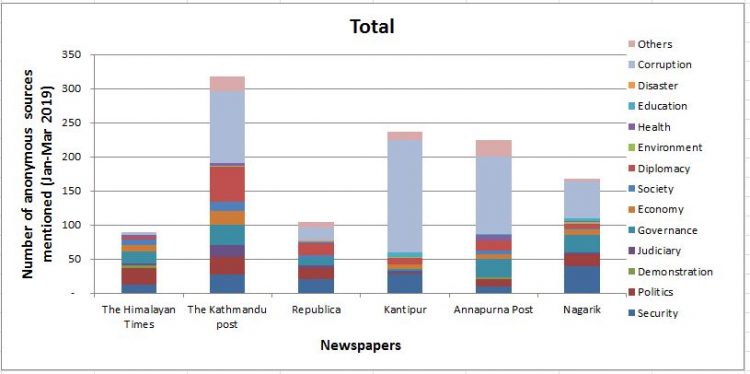
South Asia Check tracks the use of anonymous sources in the news reports published on the front pages of six leading national dailies of Nepal – Kantipur, Nagarik, Annapurna Post, The Kathmandu Post, Republica and The Himalayan Times. While the first three are Nepali language newspapers, the last three publish in English.
After The Kathmandu Post, the dailies using the most number of anonymous sources included Kantipur, Annapurna Post, Nagarik and Republica respectively. The Himalayan Times used the least number of anonymous sources – 90 in total – during the period.
During the three months, the front page reports of the six dailies used altogether 1,142 anonymous sources.
Most of the news reports on the front pages of the newspapers were on politics. But anonymous sources were mostly used in corruption-related news reports (in 462 instances) during the period. Kantipur and Annapurna Post were the first and second national dailies respectively using the highest numbers of anonymous sources in their news reports related to corruption; Kantipur used anonymous sources in 165 instances and Annapurna Post in 113 instances in such reports.
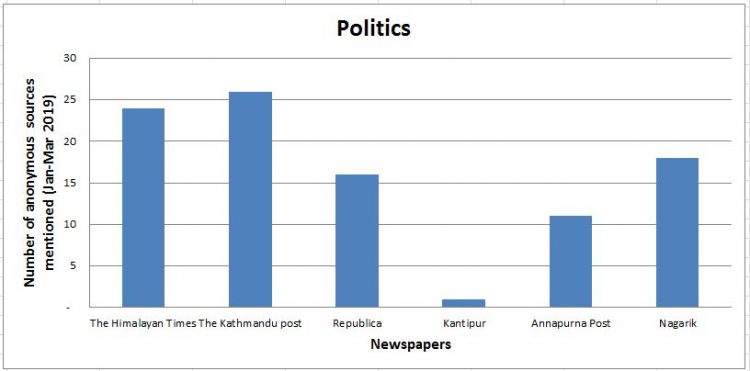
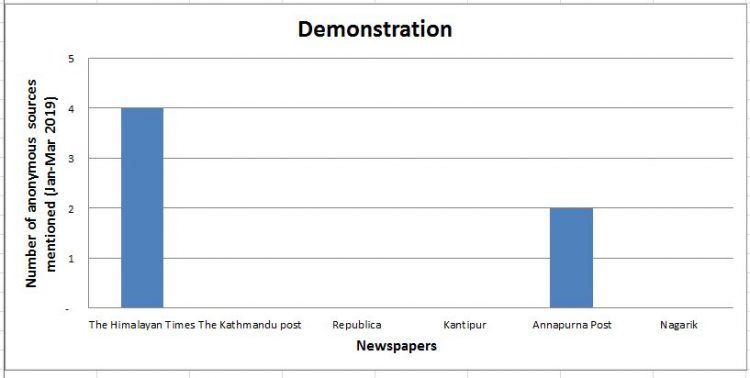
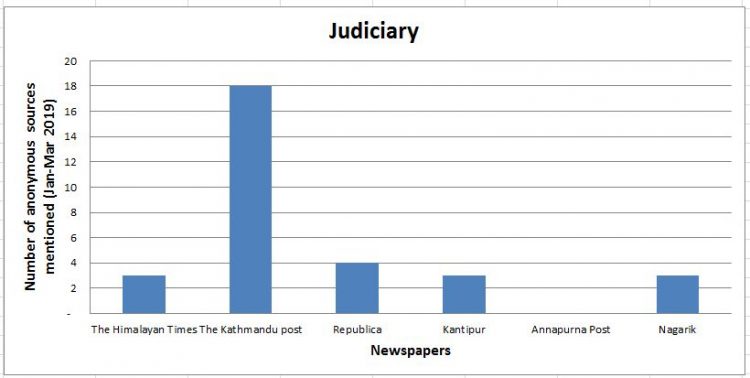
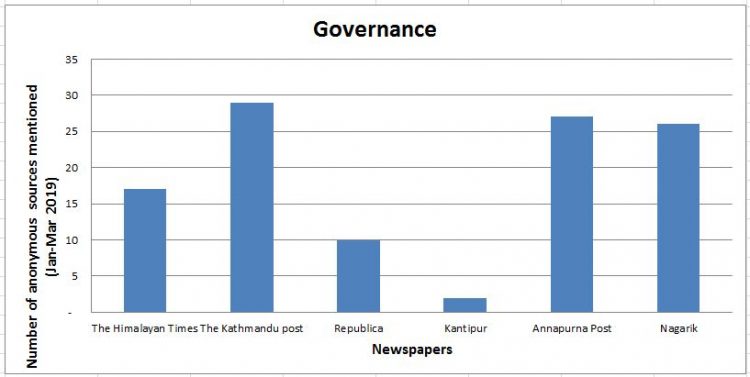
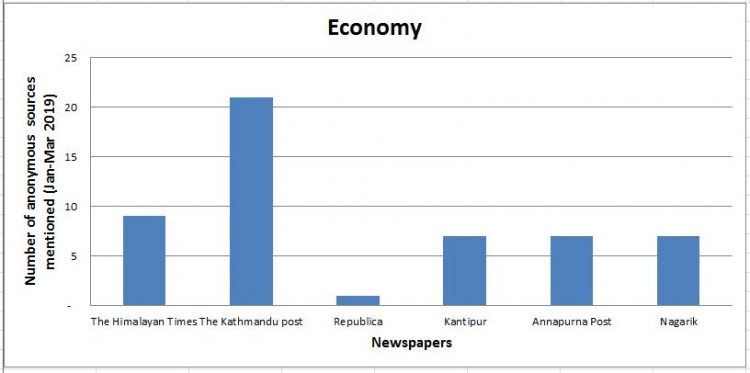
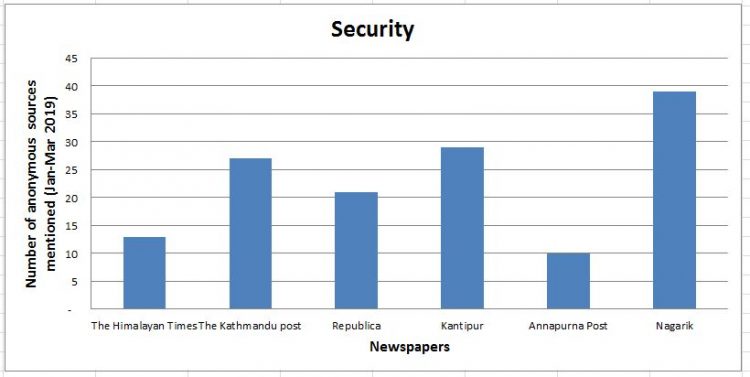
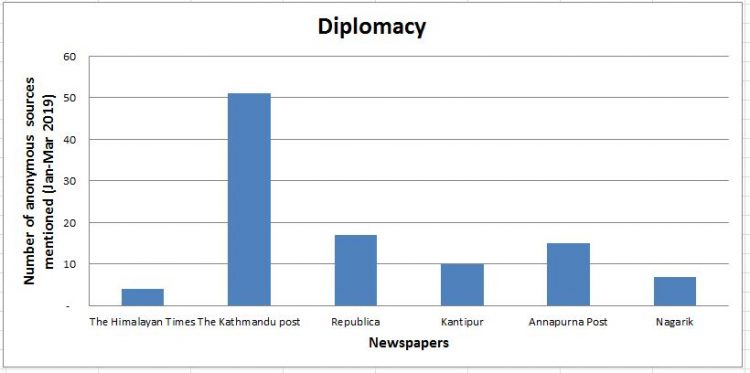
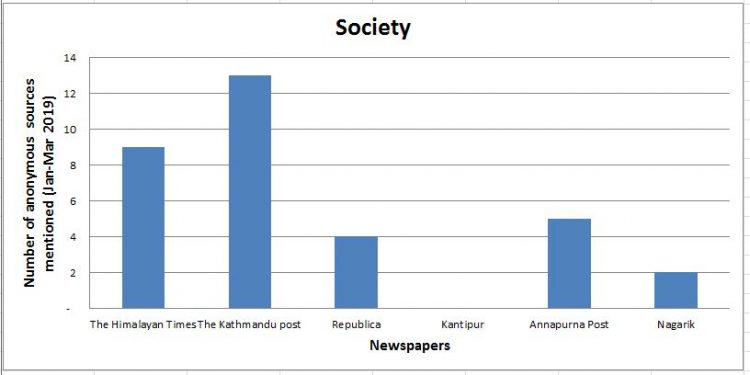
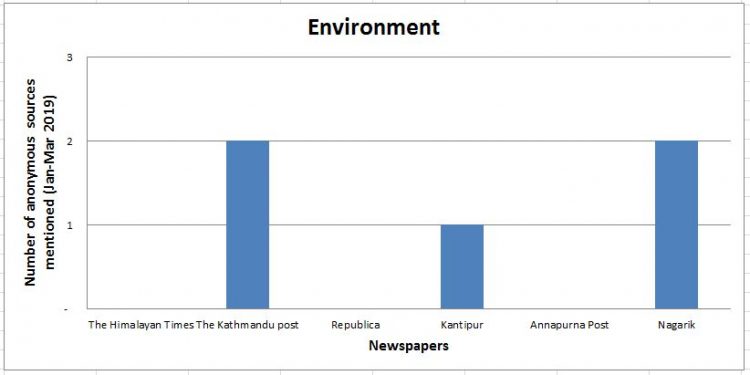
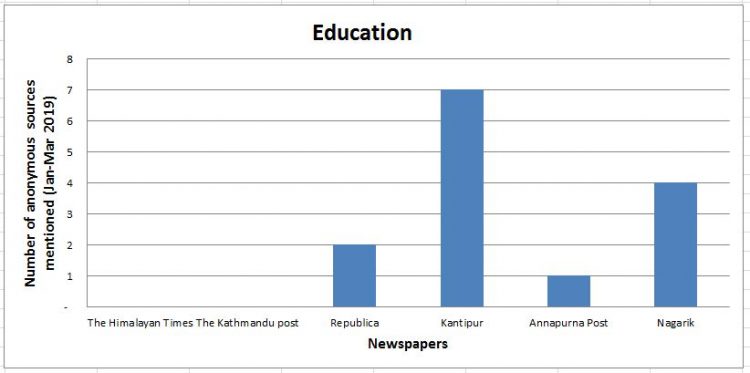
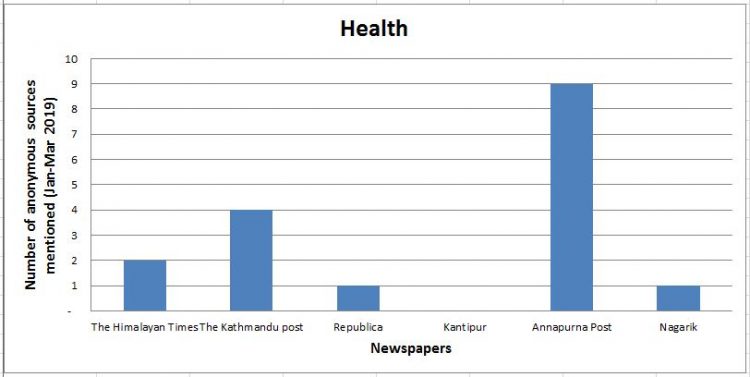
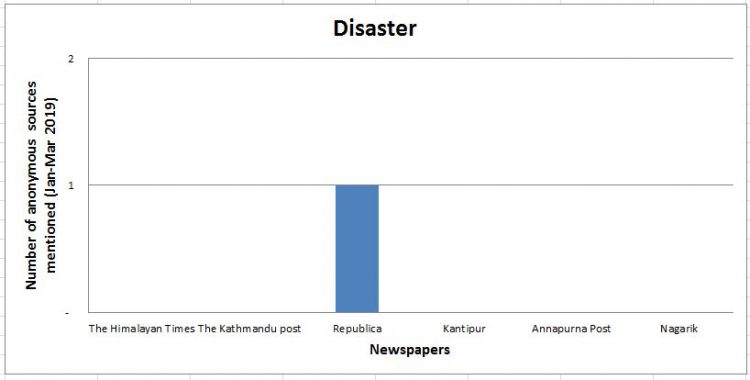
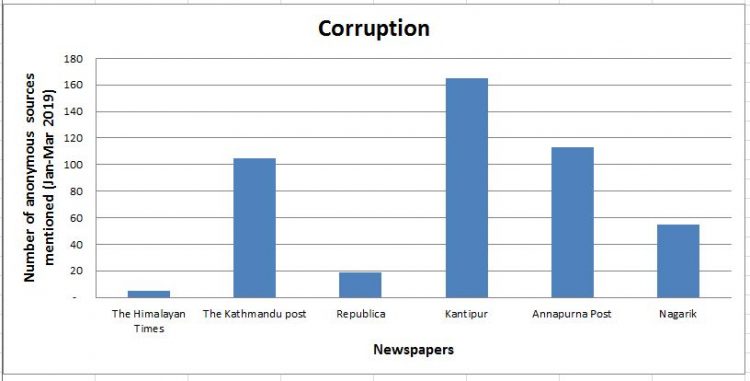
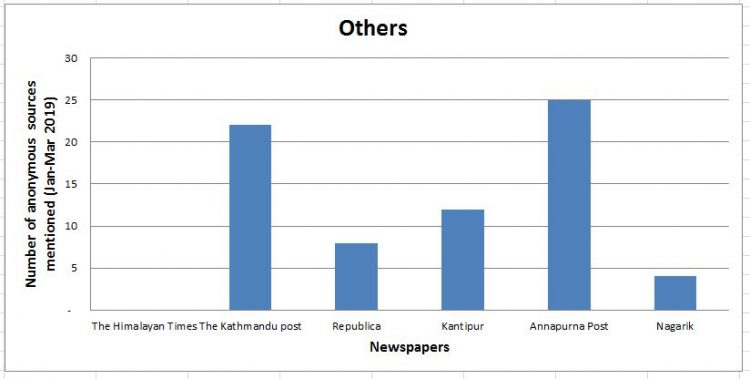
Security is the second topic in the Nepali newspapers where anonymous sources were used in highest numbers. During this period, anonymous sources were used in 139 instances in security-related news reports in the six newspapers. Nagarik used the highest numbers of anonymous sources in security-related news reports.
Quoting anonymous sources in news reports is normal. Regarding the use of anonymous sources in news reports, ‘Journalist’s Code of Conduct, 2016’ issued by the Nepal Press Council states the following:
“Source should be quoted for the reliability of the news. However, while quoting the source, the name and identity of such source should be kept confidential so as to avoid any serious damage to the source.”
The identity of news source should be protected only if revealing the source’s identity can cause serious harm to him/her. But some news reports published during this period have quoted anonymous sources even when there is no apparent need to do so.
For example, a report headlined “Snow yet to melt but schools reopen” published in a Nepali-language daily stated the following:
“It is not possible to reopen the schools in the uplands immediately. We are having snowfall every day. There is snow everywhere. It is really difficult for the students to find their way to school through the snow,” said a teacher
Similarly in another story headlined “Mother at 12” stated: “I am surprised that she has given birth at such a young age. Now with visitor numbers growing, it has become difficult to manage them,” a nurse said.
Another report “Government firm on its stance” in another Nepali-language daily states:
He himself wanted to be shifted to the general ward saying his stay at ICU could deprive other patients from getting proper medical care. However, according to a physician involved in his treatment, his condition is not critical.
In the same Nepali daily, another story headlined “Bus used by wedding party touches power line” says:
One witness said, “As soon as the first bus passed, the second bus touched the power line. And, we saw people jumping off the bus.”
Another news headlined “Hardships are over now” states:
There were three policemen on duty. One of them said, “About 400 people have been receiving services daily.”
Yet another report in a Nepali-language daily headlined, “Six along with Adhikari cremated,” stated:
According to the family sources, the mourning rituals will be completed within seven days.
In these news reports, the use of anonymous sources looks unjustified because revealing the identity of the news sources would not cause any harm to the sources.
Haphazard use of the anonymous sources diminishes the credibility of news reports and the newspapers publishing such reports.
Click here to download the statistics prepared by South Asia Check on this issue.
This material is copyrighted but may be used for any purpose by giving due credit to southasiacheck.org.
Comments
Latest Stories
- In Public Interest Covid-19 cases are low, but that’s not an excuse to avoid vaccination
- In Public Interest What is BF.7, the sub-variant that has the world by its grip?
- In Public Interest Threat of a new Covid-19 wave looms large amid vaccine shortage in Nepal
- In Public Interest As cases decline, Covid-19 test centres in Kathmandu are desolate lot
- In Public Interest Dengue test fee disparity has patients wondering if they’re being cheated
- In Public Interest As dengue rages on, confusion galore about what it is and what its symptoms are. Here’s what you need to know
In Public Interest
 Covid-19 cases are low, but that’s not an excuse to avoid vaccination
The Pfizer-BioNTech bivalent vaccines authorised by the Nepal Government provide better protection a...
Read More
Covid-19 cases are low, but that’s not an excuse to avoid vaccination
The Pfizer-BioNTech bivalent vaccines authorised by the Nepal Government provide better protection a...
Read More
- What is BF.7, the sub-variant that has the world by its grip?
- Threat of a new Covid-19 wave looms large amid vaccine shortage in Nepal
- As cases decline, Covid-19 test centres in Kathmandu are desolate lot
- Dengue test fee disparity has patients wondering if they’re being cheated
- As dengue rages on, confusion galore about what it is and what its symptoms are. Here’s what you need to know